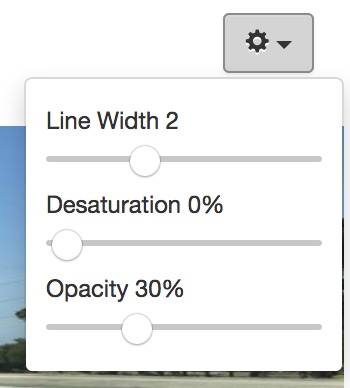准备数据集
准备KITTI数据集,下载地址 http://www.cvlibs.net/datasets/kitti/eval_object.php,包括的文件有:
| Description | Filename | Size |
|---|---|---|
| Left color images of object data set | data_object_image_2.zip |
12GB |
| Training labels of object data set | data_object_label_2.zip |
5MB |
| Object development kit | devkit_object.zip |
1MB |
把文件放在目录 $DIGITS_ROOT/examples/object-detection/下,然后执行命令:
$ ./prepare_kitti_data.py Extracting zipfiles ... Unzipping data_object_label_2.zip ... Unzipping data_object_image_2.zip ... Unzipping devkit_object.zip ... Calculating image to video mapping ... Splitting images by video ... Creating train/val split ... Done.
数据集会被解压到 $DIGITS_ROOT/examples/object-detection/kitti-data/{train,val}/
The data is structured in the following way:
- An image folder containing supported images (
.png,.jpg, etc.). - A label folder containing
.txtfiles in KITTI format that define the ground truth. For each image in the image folder there must be a corresponding text file in the label folder. For example if the image folder includes an image namedfoo.pngthen the label folder needs to include a file namedfoo.txt.
把数据加载到digits
On the DIGITS home page, select the Datasets tab then click New Dataset > Images > Object Detection:

On the dataset creation page, specify the paths to the image and label folders for each of the training and validation sets. Other fields can be left to their default value. Finally, give your dataset a name and click Create:
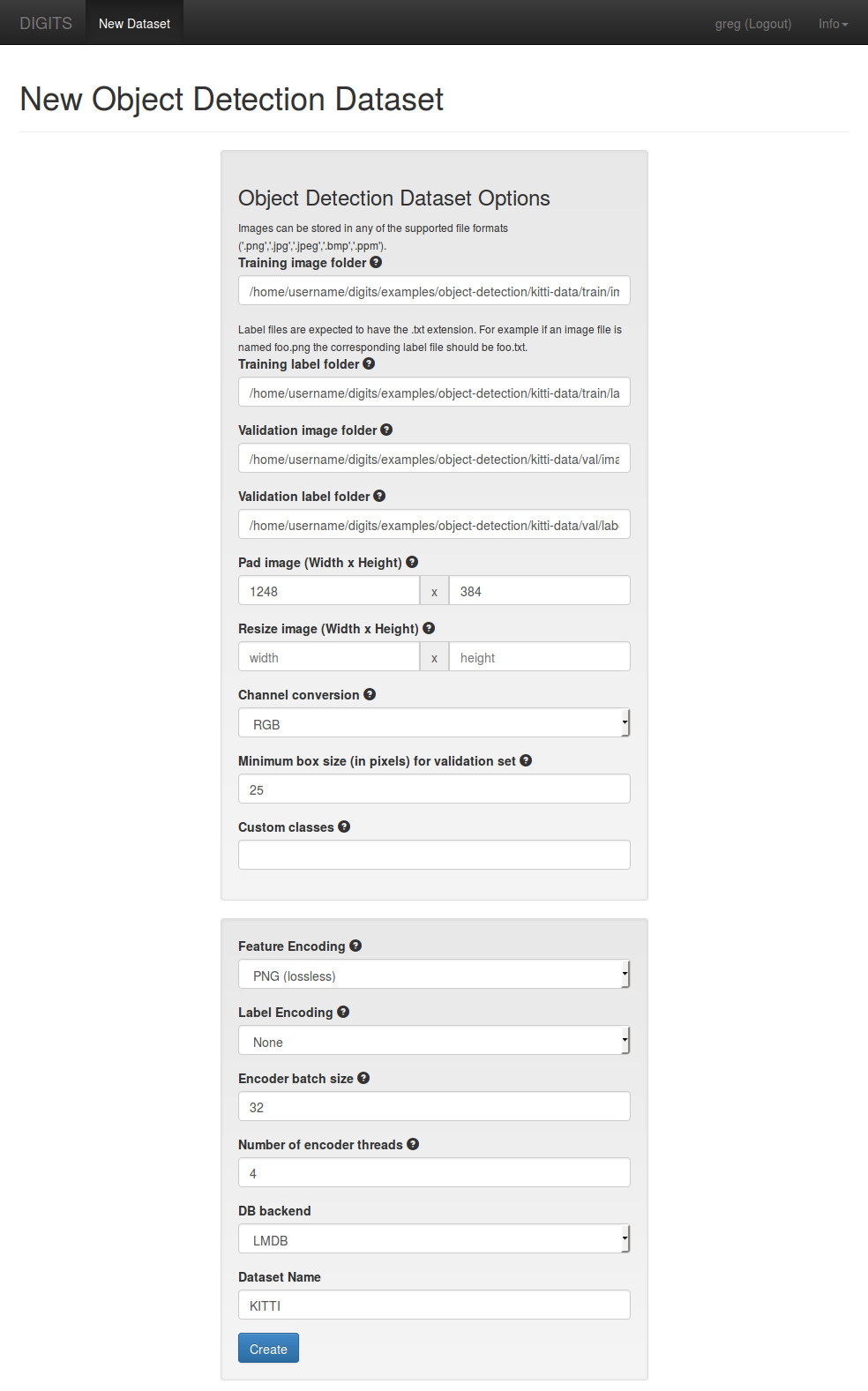
After you have created your dataset you may review data properties by visiting the dataset page. In the below example there are 5984 images in the training set and 1496 images in the validation set:
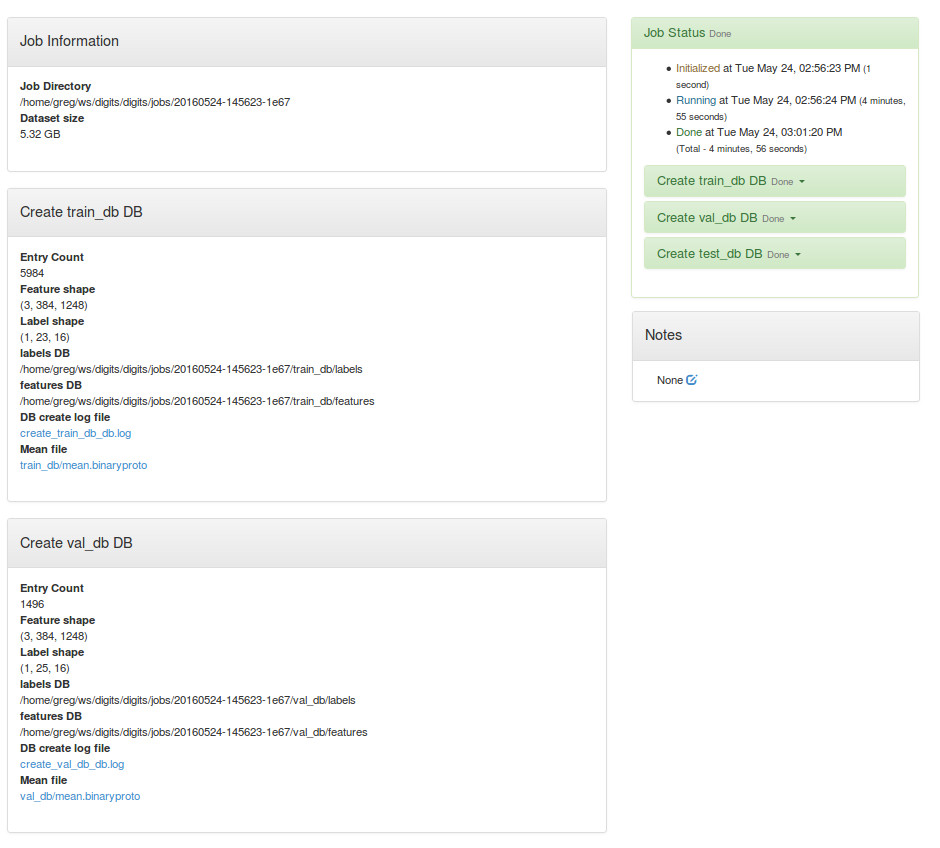
创建model
In this example we will use DetectNet. DetectNet is a GoogLeNet-derived network that is specifically tuned for Object Detection.
For more information on DetectNet, please refer to this blog post.
In order to train DetectNet, NVcaffe version 0.15.1 or later is required. The model description for DetectNet can be found at$CAFFE_ROOT/examples/kitti/detectnet_network.prototxt (raw link).
Since DetectNet is derived from GoogLeNet it is strongly recommended to use pre-trained weights from an ImageNet-trained GoogLeNet as this will help speed training up significantly. A suitable pre-trained GoogLeNet .caffemodel may be found on this page.
Training DetectNet in DIGITS
On the DIGITS home page, select the Models tab then click New Model > Images > Object Detection:
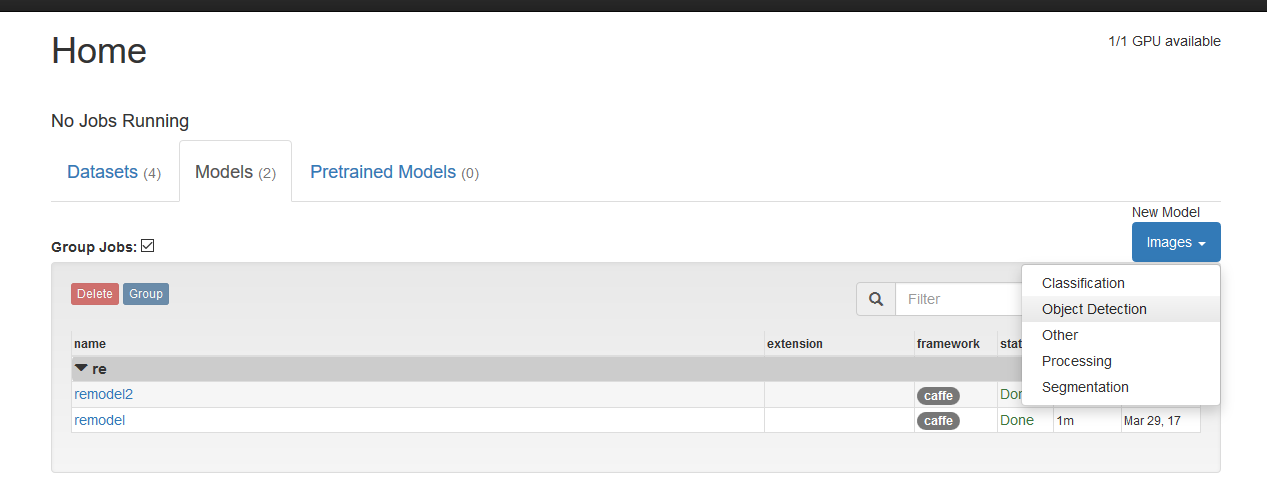
On the model creation page:
- Select the dataset that was created in the previous section.
- Set
Subtract meantoNone. - Set the base learning rate to 0.0001.
- Select the
ADAMsolver. - Select the
Custom Networktab.- Make sure the
Caffesub-tab is selected. - Paste the DetectNet model description in the text area.
- Make sure the
- In
Pretrained model(s)specify the path to the pre-trained GoogLeNet.
You may click Visualize to review the network topology:
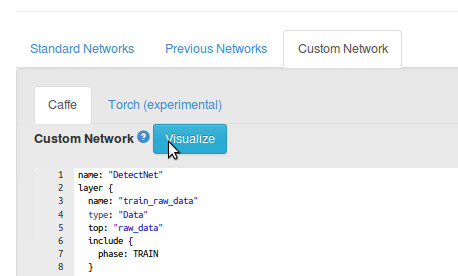
NOTE: this instance of DetectNet requires at least 12GB of GPU memory. If you have less memory on your GPU[s], you may want to decrease the batch size. On a 4GB card, you can set the batch size to 2 and the batch accumulation to 5, for an effective batch of 10, and that should fit on your card.
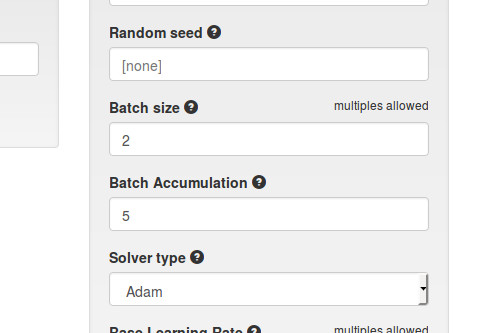
Finally, select the number of GPUs to train on, give your model a name then click Create:
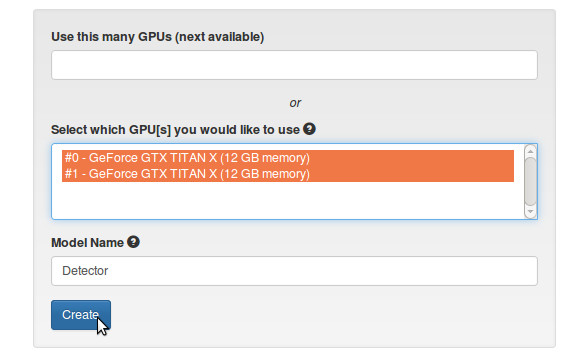
After training the model for 30 epochs the training curves may look like below. Make good note of the purple curve which is showing the mAP (mean Average Precision). The mAP is the main indicator of the network accuracy:
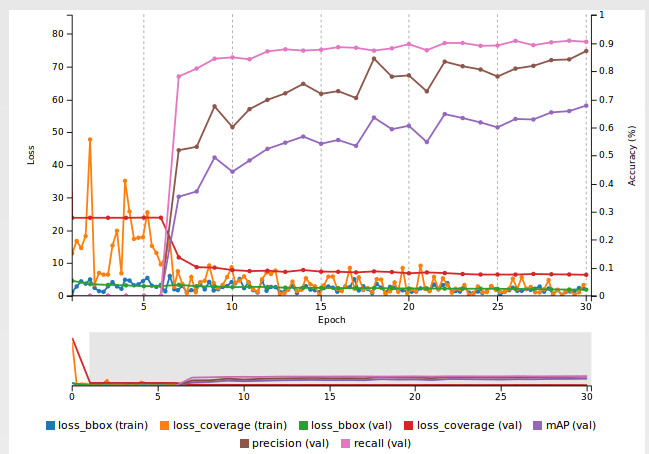
Verification
To assess the model accuracy we can verify how the model performs on test images. The network output is better visualized by drawing bounding rectangles around detected objects. To this avail, select Bounding Boxes in Select Visualization Method:

To test an image, in Test a single Image, specify the path to an image then click Test One. The output may be rendered as below:
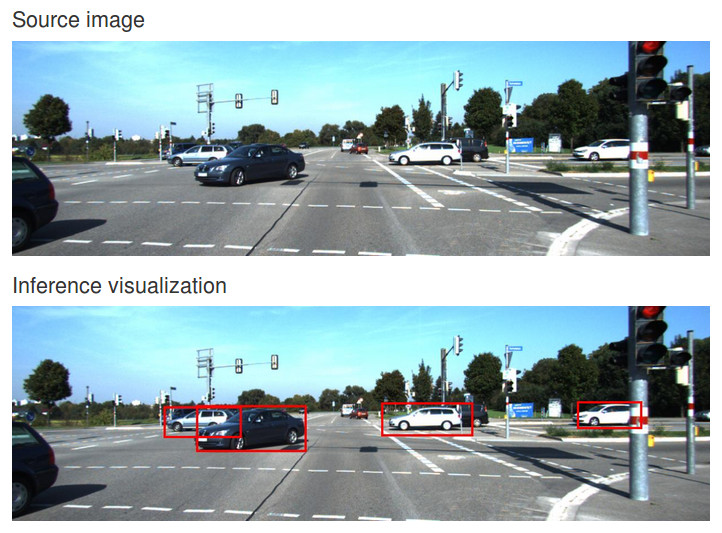
You may also test multiple images at once by specifying the image paths in a text file (one line per image path). To that end, inTest a list of Images, upload an image list. The output may be rendered as below:
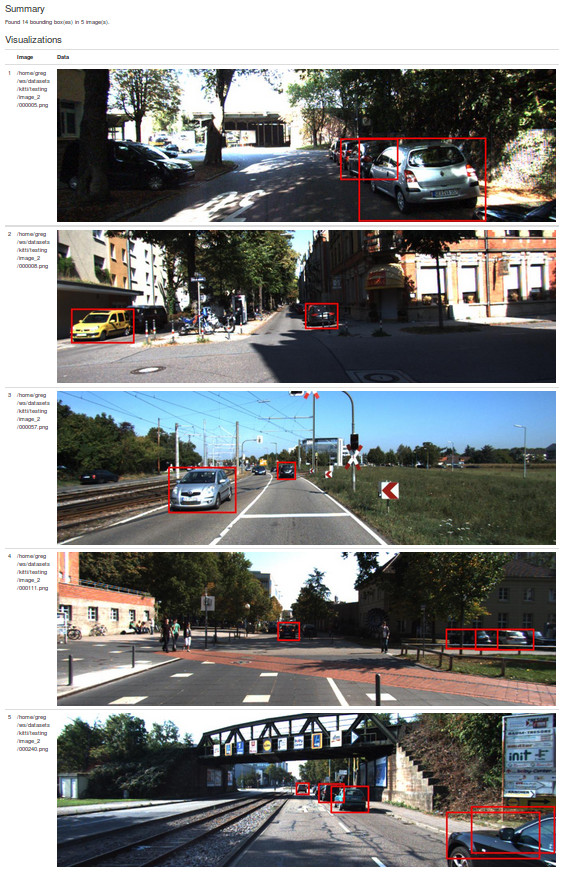
The options cog menu allows you to adjust a few view options. The opacity applies to the interior of the bounding box rectangle, and desaturation appies to the image, which is useful when the image contains a lot of the bounding box color.
